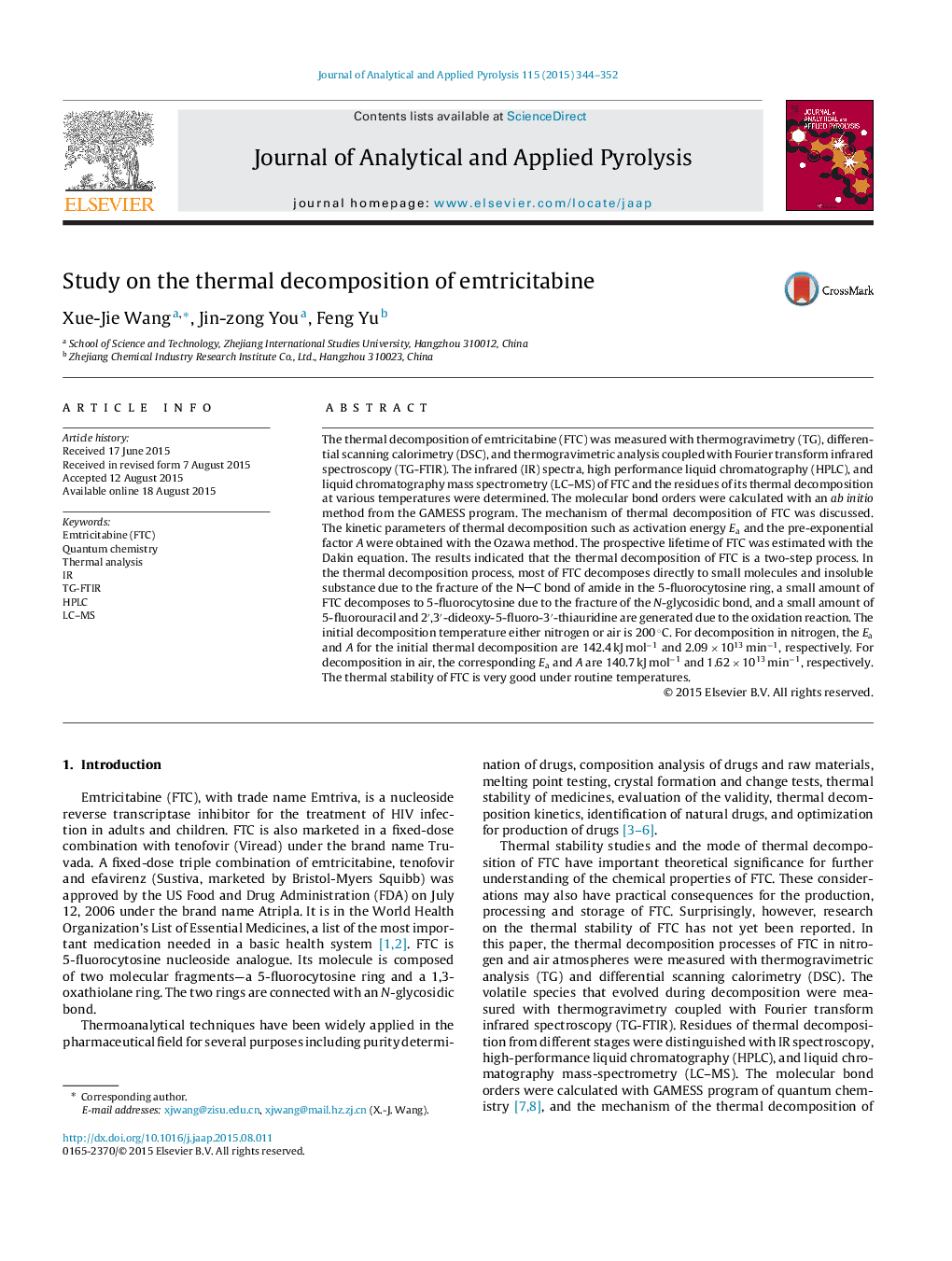| Article ID | Journal | Published Year | Pages | File Type |
|---|---|---|---|---|
| 1197109 | Journal of Analytical and Applied Pyrolysis | 2015 | 9 Pages |
•The thermal decomposition of Emtricitabine (FTC) was studied with various instruments and methods.•The molecular bond orders were calculated with a method of quantum chemistry.•The mechanism of the thermal decomposition of FTC has been proposed.•The kinetic parameters of thermal decomposition, such as Ea and A, were obtained.•The prospective lifetime of FTC was speculated.
The thermal decomposition of emtricitabine (FTC) was measured with thermogravimetry (TG), differential scanning calorimetry (DSC), and thermogravimetric analysis coupled with Fourier transform infrared spectroscopy (TG-FTIR). The infrared (IR) spectra, high performance liquid chromatography (HPLC), and liquid chromatography mass spectrometry (LC–MS) of FTC and the residues of its thermal decomposition at various temperatures were determined. The molecular bond orders were calculated with an ab initio method from the GAMESS program. The mechanism of thermal decomposition of FTC was discussed. The kinetic parameters of thermal decomposition such as activation energy Ea and the pre-exponential factor A were obtained with the Ozawa method. The prospective lifetime of FTC was estimated with the Dakin equation. The results indicated that the thermal decomposition of FTC is a two-step process. In the thermal decomposition process, most of FTC decomposes directly to small molecules and insoluble substance due to the fracture of the NC bond of amide in the 5-fluorocytosine ring, a small amount of FTC decomposes to 5-fluorocytosine due to the fracture of the N-glycosidic bond, and a small amount of 5-fluorouracil and 2′,3′-dideoxy-5-fluoro-3′-thiauridine are generated due to the oxidation reaction. The initial decomposition temperature either nitrogen or air is 200 °C. For decomposition in nitrogen, the Ea and A for the initial thermal decomposition are 142.4 kJ mol−1 and 2.09 × 1013 min−1, respectively. For decomposition in air, the corresponding Ea and A are 140.7 kJ mol−1 and 1.62 × 1013 min−1, respectively. The thermal stability of FTC is very good under routine temperatures.
